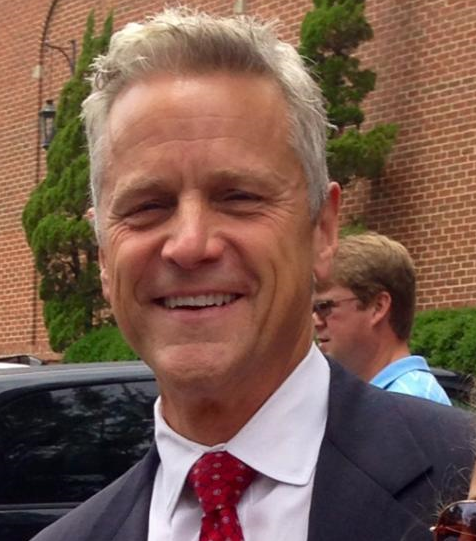
- This event has passed.
Sealing the Building Envelope: Principles, Products & Practice
August 23, 2018 @ 6:00 pm - 7:30 pm
BEC Charleston Presents
David Sorrells: Southern Regional Manager EMSEAL
Sealing the Building Envelope: Principles, Products & Practice
Continuing Education:
AIA: 1.5 LU/HSW/SD
SC Building Codes Council: 1.5 hrs (pending)
Certificates Provided
Summary
Although they are a minor component of the building envelope, joints with sealants are often responsible for defects and failures — sometimes after only a couple of years. These problems arise because there is often confusion as to who is responsible for design of joints and choice of sealants and because DETAILED DESIGN IS LEFT TOO LATE — so that decisions already taken make it difficult to design a satisfactory joint.
 —From Civil Engineer International:, July 1995, Report from CIRIA (Construction Industry Research and Information Association). While this research is a bit dated, its truths are not.
—From Civil Engineer International:, July 1995, Report from CIRIA (Construction Industry Research and Information Association). While this research is a bit dated, its truths are not.
Waterproofing related issues constitute a lions share of post-tenancy complaints and revenue disruption and are involved in an estimated 90% of construction-related lawsuits. EMSEAL Is routinely at the center of communication disconnects that exist between the design architect responsible for selecting joint sealants and the engineers calculating joint movement. When this conversation ignores the movement capability of the product that is expected to seal the joints, failures usually result.
I. WHY BUILDINGS LEAK – TYPICAL PROBLEMS
1. Forces That Cause Moisture Ingress
A: Raindrop Momentum
B: Gravity
C: Capillary Action
D: Surface Tension
E: Air Pressure Difference
2. Where Moisture Gets In
A: Through Cladding (Porosity of Cladding)
B: Improperly Sealed or Failed Joint Seals
C: Poorly Detailed or Executed Roof-to Wall Interface
D: Window Assemblies that are Poorly Designed and/or That Do Not meet ANSI Requirements for Wind Driven Rain or Hurricane Forces
E: Poorly Designed Vents, HVAC Units, and Other Envelope Penetrations
II. JOINT SEALING
1. Types of Joints
A: Structural Expansion Joints and Abutment Joints between Structures (ex. New and Existing)
B: Joints at Penetrations to the Envelope (Windows, Doors, Vents, HVAC Units)
C: Joints between Dissimilar Materials
D: Joints at changes in roof lines, building shape or structural systems
E: Joints in cladding panels
2. Fundamental Design Issues Affecting Joint Sealing
A: Existence and Emphasis
B: Sizing & Movement
- a) Allowable Construction Tolerances
b) Relationship of Calculated Movement to Movement Capability of a Product Type
C: Failure to Design in Other than Cross- Section
D: Specification of Competitive Technologies
E: Continuity & Communication
III. JOINT SEALANT PRODUCT TYPES
1.Compression Seals
2.Strip Seals
3.Caulk & BackerRod
4. Open-Cell Precompressed Foam—100 % Acrylic impregnation vs Wax Saturation
5.Binary Sealants–Pre-Applied & Field-Applied
IV. Innovation and Design Versatility
1. Double Sided Pre-Applied Binary Sealants
2. Watertight – Fire Rated Joints achieved with a Single Installation
3. Factory Fabricated Universal 90’s
4. LEED Contributions including R-value, STC & OITC ratings, and longevity
V. INSTALLATION & QUALITY MANAGEMENT
1. Function of Checklists
Learning Objectives:
- Analyze how watertight, energy efficient, fire-rated expansion joints are the consequence of a process in which we: Design, Detail, Specify, Bid, Erect, Manufacture, & Install in 3-D.
- Become familiar with product technologies and how to apply them.
- Discover why it is critical to require certified performance reports in your specifications.
- Know that your next building can be a watertight structure.
About Our Presenter

David Sorrells has thirty years of experience in the specification and marketing of construction products and services. He began his career in the employ of Sherman International, the largest producer of concrete and concrete products in the southeastern United States at that time. His responsibilities included quality assurance, quality control, design, testing, and sales. He then became the Marketing Director for Bhate Engineering, a regional geotechnical and materials testing engineering firm where his responsibilities included both marketing of professional engineering services and management of geotechnical, construction materials testing, and environmental engineering projects. In1995 he joined Watson Bowman Acme, an international manufacturer of expansion joints, urethane traffic membranes, and composite strengthening systems as the South Regional Sales Manager. His responsibilities included sales management, specification development, technical support, and quality control. In 2005 he joined EMSEAL as Southern Regional Manager promoting the industry’s premier line of preformed sealants and expansion joint systems. David has a Bachelor of Science degree from the University of Alabama and a Master’s degree in Business Administration from Samford University.
